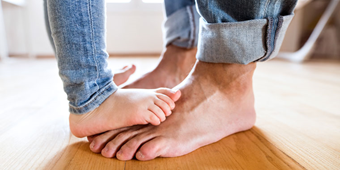Adults Get Ear Infections, Too!

Find Your Perfect Match
Answer a few questions and we'll provide you with a list of primary care providers that best fit your needs.
You probably know that ear infections are common in children. But they often occur in adults, too. Nurse practitioner Brittany Jamison, MSN, APRN, FNP-C, has seen her share of adult ear infections.
“Adults are especially susceptible if they have a history of seasonal allergies, past ear infections, or poorly functioning eustachian tubes,” she says. “We see more of them as the weather gets warmer; summer colds and allergies cause congestion and drainage issues. As mucus builds up and the ear becomes inflamed, an inner ear infection can result.”
Ear pods and headsets also can cause ear infections. “The constant irritation from inserting and removing these devices can aggravate the ear canal and make it more susceptible to bacteria,” says Jamison. “We’ve seen a lot more adults with ear infections since more people have begun working from home.”
Outer ear infections also are not unusual among adults. Just as it sounds, an outer ear infection causes pain and possible swelling on the outside of the ear.
Symptoms
The classic symptoms of an ear infection in adults include one or more of the following:
- Ear pain that can begin as a dull ache, but may become sharper
- Pain when swallowing
- A feeling of congestion or fullness within the ear
- Sounds becoming muffled as hearing is affected
- Swelling around the ear
Treatment
Inner ear infections may resolve on their own with support from over-the-counter pain relievers, or an antihistamine, or a nasal spray for allergic rhinitis. “These can reduce pain, inflammation and drainage,” says Jamison. “But if the problem doesn’t go away in a few days, it’s time to contact your physician or go to Urgent Care. An antibiotic may be necessary.”
If you have pain behind your ear, the lymph nodes located there are probably swollen, and a prescription for antibiotics may be necessary. Consult with your doctor if your pain is behind your ear.
Outer ear infections typically need a prescription for antibiotic drops, sometimes with added steroids to reduce inflammation, explains Jamison.
Other Reasons For Ear Pain
- Earwax. If you frequently attempt to remove the wax in your ear canal, you may actually be pushing the wax further into the canal. This can result in the canal becoming plugged. Such impacted earwax can cause pressure, ringing in the ear, vertigo, or a feeling of fullness. Your doctor can use special instruments to rinse out the ear canal and remove the plug of wax.
- Tooth. A painful tooth is sometimes mistaken for an ear infection. “That’s because tooth pain often radiates up into the jaw, which is very close to the ear,” says Jamison.
- Mastoiditis. An inflammation of the mastoid bone, which is located behind your ear, can cause pain and be mistaken for an ear infection. Although rare, mastoiditis is serious and requires treatment by a primary care provider or ear, nose, and throat specialist.
- Ruptured eardrum. A ruptured eardrum can result in ear pain and hearing loss. Possible causes include a change in pressure from air travel or scuba diving, a blow to the ear, a loud blast of noise, or an object pushed into the ear. Consult your physician if you think you may have ruptured an eardrum.
Find Your Perfect Match
Answer a few questions and we'll provide you with a list of primary care providers that best fit your needs.
Source: Brittany Jamison, MSN, APRN, FNP-C; National Institutes of Health





